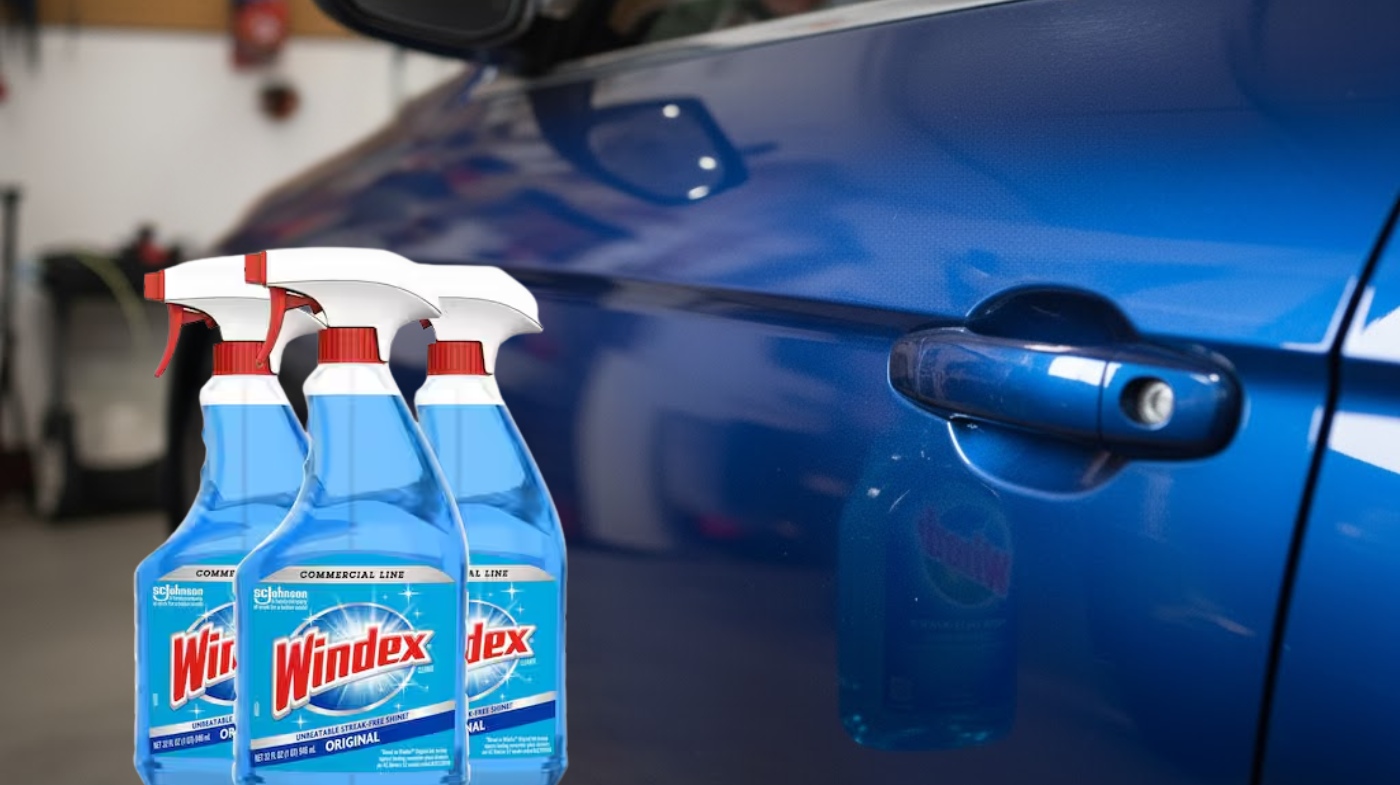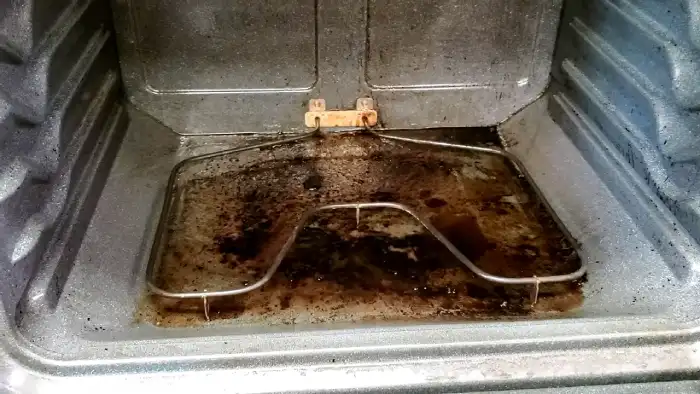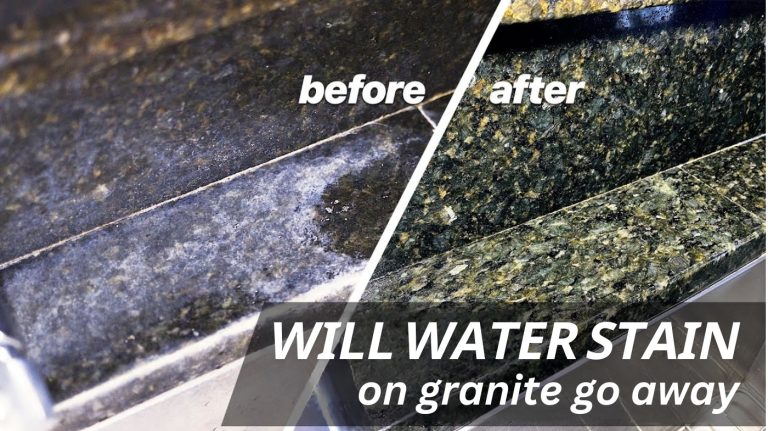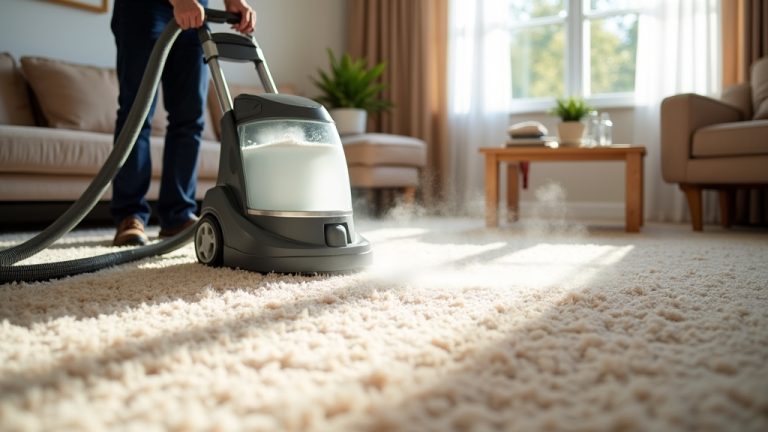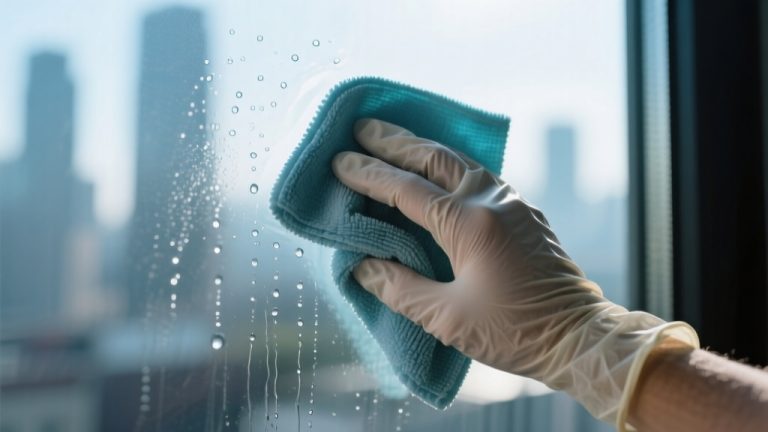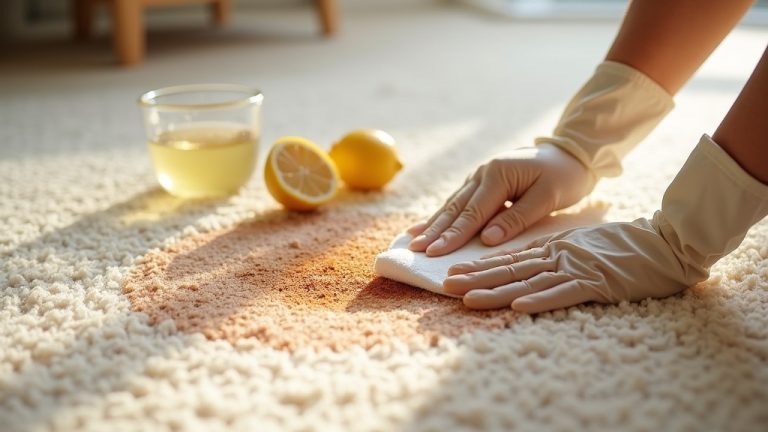Does Windex Damage Car Paint? Know the Real Effects
You shouldn’t use Windex on your car’s paint because its ammonia and alcohol aggressively strip away the clear coat and protective wax layers. This makes your finish prone to fading, etching, and micro-scratches.
These chemicals disrupt the paint’s polymer matrix and degrade surface integrity, unlike on glass where damage is minimal. For paint protection, specialized automotive cleaners with pH-neutral formulas work best. Understanding the exact reasons behind this will help you preserve your car’s finish longer.
Key Takeaways
- Windex contains ammonia and alcohol, which can strip wax and degrade the clear coat on car paint over time.
- Frequent use of Windex may cause fading, micro-scratches, and dullness by breaking down protective paint layers.
- Car paint is softer than glass and more susceptible to chemical damage from household cleaners like Windex.
- Using Windex can remove essential protective coatings, increasing vulnerability to contaminants and UV damage.
- Experts recommend automotive-specific, pH-neutral cleaners over Windex to safely maintain and protect car paint.
Chemical Components in Windex and Their Effects on Car Paint
Although Windex is formulated primarily for glass cleaning, its chemical components can interact differently with car paint surfaces.
Windex’s ingredients, designed for glass, may react adversely with car paint surfaces.
It contains ammonia, a strong alkaline agent, which can break down the clear coat’s protective layer if exposed repeatedly or left on too long.
Additionally, surfactants in Windex help dissolve oils and grime but may also strip away wax layers critical for paint protection.
Isopropanol, another solvent present, evaporates quickly but can contribute to drying out the paint’s surface, potentially causing micro-cracks over time.
While these ingredients effectively clean glass, their combined effect on car paint can compromise the finish’s integrity by removing protective barriers and altering surface chemistry. Ammonium Hydroxide can alter pH to improve cleaning results but may also affect paint surface stability.
You should be aware that Windex’s formulation isn’t optimized for automotive paint, leading to potential chemical interactions that differ from its intended use on glass.
This highlights the importance of choosing chemical compatibility when selecting cleaning products for different surfaces.
Potential Physical Damage From Using Windex on Paint
When you use Windex on your car’s paint, things can get a little tricky. The lack of lubrication means there’s more friction between the cloth and the surface.
This can lead to micro-scratches that build up over time. Windex also contains caustic chemicals like alcohol and glycol, which are harsh on paint. It is important to note that cleaning agents with improper pH levels can accelerate surface damage.
Those tiny abrasions? They can dull your paint’s finish and even mess with the clear coat layer.
And it gets even riskier. If you keep wiping with Windex, especially with abrasive cloths, you’re really increasing the chances of surface abrasion. Over time, this can lead to some serious long-term damage.
Micro-scratch Risks
Because Windex contains ammonia and other chemicals not formulated for automotive paint, using it can strip protective wax layers and increase the risk of micro-scratches on your car’s surface.
These chemicals may chemically interact with the paint, weakening its protective barrier and making it more susceptible to damage. Applying Windex on hot surfaces or scrubbing aggressively exacerbates this risk by causing thermal stress and mechanical abrasion.
To minimize damage, always use a diluted solution and clean with a soft, microfiber cloth free of debris. However, even careful application carries risks since Windex isn’t pH balanced for paint.
For best protection, use automotive-specific cleaners designed to maintain wax integrity and prevent micro-scratches. Regular waxing also reinforces this barrier, reducing vulnerability caused by harsh household chemicals like Windex.
Additionally, close visual inspection often reveals that minor surface imperfections, including micro-scratches, can be masked by polishing but may still compromise the surface condition.
It is important to avoid harsh chemical cleaners as they can cause chemical corrosion similar to the effects seen when oven cleaners are misused on sensitive surfaces.
Paint Surface Abrasion
If you apply Windex with abrasive cloths or scrub aggressively, you risk physically abrading your car’s clear coat. This can lead to visible scratches and a loss of gloss.
The clear coat, especially on softer or older paint finishes, is highly susceptible to micro-abrasions caused by rough materials or vigorous rubbing.
Such damage compromises the protective barrier, exposing underlying paint layers to oxidation and environmental factors. While a single spray of Windex likely does not cause significant damage beyond wax removal, repeated or harsh application can accelerate wear on the clear coat single spray safety.
Regular maintenance and gentle cleaning techniques are essential to preserve the paint’s protective layer and appearance.
Furthermore, physically removing Windex residues with harsh motions can exacerbate surface wear, accelerating deterioration. Once the clear coat is abraded, the paint’s smoothness diminishes, reducing gloss and clarity.
To prevent this, use only soft, non-abrasive cloths and gentle wiping when removing Windex. This minimizes mechanical damage while preserving the integrity of your vehicle’s finish proper cleaning materials.
Impact of Windex on Clear Coat and Protective Wax Layers
Although Windex effectively cleans glass and household surfaces, its chemical composition poses risks to your car’s clear coat and protective wax layers.
The alcohol, ammonia, and glycol in Windex break down the clear coat’s polymer matrix and strip wax, reducing gloss and exposing paint to contaminants.
Repeated use weakens surface protection and accelerates fading. Proper cleaning materials should be chosen to avoid damaging automotive surfaces.
Additionally, Windex is not formulated for automotive surfaces, making it a suboptimal choice compared to products designed specifically for vehicles, such as Adams Polishes’ ammonia-free cleaners which are safe and effective for car care.
| Component | Effect on Clear Coat/Wax |
|---|---|
| Alcohol/Glycol | Breaks down polymer matrix |
| Ammonia | Degrades surface tension, dulling |
| Solvents | Strips lipid-based wax layers |
| Lack of Lubricants | Increases abrasion risk |
You’ll need frequent wax reapplication to maintain protection after Windex use, as it lacks replenishing agents found in specialized car care products.
Comparing the Effects of Windex on Glass Versus Car Paint
You’ll notice that glass can really handle Windex’s ammonia and alcohol without any damage. That’s mainly because glass is hard and resistant to chemicals.
On the other hand, car paint is a different story. It’s much softer and more sensitive to those same chemicals. Household cleaners like Windex can strip wax and dull paint, which is why they are not designed for automotive surfaces. Over time, exposure to these chemicals can break down protective coatings and cause long-term paint damage.
Windex is specifically formulated for glass, which is why it does such a great job cleaning without causing any harm. But when it comes to car paint, those same ingredients in Windex can actually break down the protective layers, leading to dullness or even etching.
Surface Hardness Differences
Because glass has a considerably higher surface hardness than car paint, Windex and similar ammonia-based cleaners affect them differently. Glass rates around 5.5 to 6.5 on the Mohs hardness scale, making it resistant to scratches and chemical damage.
In contrast, car paint’s clear coat is softer and designed for flexibility, not hardness. This means Windex, safe for glass, can abrade or chemically degrade the clear coat, causing micro-scratches, etching, or fading.
Windex contains ammonia, which can strip wax and protective coatings from the paint surface, accelerating damage. Prompt and proper cleaning methods are crucial because chemical interactions can weaken and damage the paint layers over time.
Additionally, glass cleaning involves minimal mechanical abrasion, whereas car paint is vulnerable to damage from aggressive wiping or abrasive towels. The lower hardness and layered composition of paint require gentle cleaning methods to avoid accelerating clear coat wear, loss of gloss, and exposure of underlying layers.
Chemical Compatibility Variances
When you apply Windex to car surfaces, its chemical effects vary markedly between glass and paint due to their distinct compositions.
Windex’s ammonia and solvents aggressively interact with automotive paint, breaking down the clear coat and stripping protective wax. This leads to fading, etching, and dullness. Additionally, the ammonia in traditional Windex formulas is the key ingredient that risks automotive material damage. Since Windex lacks lubricants, it can also cause paint abrasion during wiping, accelerating surface damage.
In contrast, glass primarily suffers from streaking and potential fogging, especially on interior surfaces.
Consider these key differences:
- Ammonia corrodes paint’s molecular structure but mainly causes streaks and tint damage on glass.
- Residues dull paint finishes and attract contaminants; on glass, residues impair visibility.
- Lack of lubricants in Windex risks paint abrasion during wiping, a non-issue on glass.
- Chemical degradation of tinted glass films contrasts with minimal chemical damage on untinted glass when rinsed promptly.
Intended Cleaning Surfaces
Although Windex excels at cleaning glass surfaces due to its chemical formulation and intended use, it poses considerable risks to automotive paint.
Windex’s active ingredients, alcohol and glycol, effectively dissolve grime on non-porous, hard glass without damage. Glass’s Mohs hardness (~5.5) resists scratching. However, automotive paint is much softer and requires proper maintenance to avoid stain buildup or micro-scratches.
Its formulation lacks lubricants and is optimized for streak-free window clarity, making it unsuitable for softer automotive paint. When used on paint, Windex increases friction, raising micro-scratch risk and stripping protective waxes and clear coats. Furthermore, the presence of ammonia in some Windex variants can chemically interact with and degrade the paint’s clearcoat over time.
This compromises the finish, accelerating dulling and degradation. Automotive paint requires specialized cleaners with lubricants to preserve coatings and prevent damage.
You should restrict Windex to glass surfaces only and avoid its use on painted panels to maintain your vehicle’s integrity and finish longevity.
Why Car Paint Requires Specialized Cleaning Products?
Since car paint involves complex layers and delicate finishes, you need specialized cleaning products designed to maintain its integrity and appearance.
Standard household cleaners can damage the clear coat, strip protective wax, or cause chemical etching. Here’s why specialized products are essential:
Household cleaners can harm your car’s clear coat, remove wax, and cause chemical damage—use specialized products instead.
- Chemical Compatibility: They use pH-neutral formulas to avoid degrading paint or clear coats.
- Contaminant Removal: Designed to safely eliminate iron particles, tar, and acid residues without abrasion.
- Scratch Prevention: Combined with soft microfiber tools, they minimize swirl marks and microscopic scratches.
- Protective Enhancement: Many contain agents that preserve or enhance wax and UV protection layers.
Additionally, understanding your car’s specific paint type, whether it is single-stage, two-stage, metallic, or matte, helps you select the correct cleaning products and techniques for optimal care and to avoid damage to the paint type. Using cleaning tools with soft microfiber heads can further reduce the risk of scratches during maintenance.
Using improper cleaners risks fading, oxidation, and irreversible damage. Rely on products formulated specifically for automotive paint care.
Safer Alternatives for Cleaning Car Paint Surfaces
Maintaining your car’s paint demands selecting cleaning agents that preserve its complex layers without causing harm.
Avoid household abrasives like melamine sponges; instead, opt for pH-neutral car wash soaps such as Meguiar’s Gold Class or Chemical Guys Mr. Pink. These cleanse effectively without stripping wax or damaging clear coats. Use microfiber towels with appropriate 300-400 GSM for best results and to prevent microswirls during cleaning.
For water spots, diluted white vinegar works well but always rinse with distilled water and reapply wax to protect the surface.
Baking soda paste can tackle stubborn stains if used gently. Use microfiber cloths or soft sponges to prevent micro-scratches.
| Cleaning Agent | Key Benefit |
|---|---|
| pH-Neutral Soaps | Preserve wax and clear coat |
| Diluted White Vinegar | Removes water spots safely |
| Baking Soda Paste | Mild abrasive for stain removal |
Expert Opinions and Community Experiences Regarding Windex Use
Experts strongly advise against using Windex on painted surfaces due to its harsh chemicals like ammonia and alcohol. These ingredients degrade protective wax layers and accelerate paint wear. Additionally, Windex lacks lubricants which can increase the risk of scratches and swirls when used on car paint.
Experts warn Windex’s ammonia and alcohol damage wax layers and speed up paint deterioration.
Meanwhile, community opinions vary, with some users noting occasional use on non-painted parts seems harmless. However, many caution against frequent application on paint.
Consider these points:
- Experts highlight Windex’s potential to strip wax and dull paint finish.
- Ammonia can damage window tints and rubber seals.
- Community feedback shows divided experiences but leans toward avoiding Windex on paint.
- Professional advice favors car-specific cleaning products with lubricants to prevent micro-scratches and preserve clearcoat integrity.
Best Practices for Maintaining Car Paint Without Causing Damage
Although your car’s paint can withstand typical driving conditions, improper cleaning and care can quickly degrade its finish.
Avoid household cleaners like Windex, which strip protective waxes and expose paint to UV damage. Instead, use pH-balanced car shampoos and wash by hand with soft microfiber cloths. It is important to wash in low-light conditions to prevent quick drying and water spots.
Rinse thoroughly to remove residue. Apply wax or sealants regularly to protect the surface, or consider professional ceramic coatings for superior defense.
Park in shaded areas to minimize UV exposure and avoid sap from trees.
| Task | Best Practice |
|---|---|
| Cleaning | Use pH-balanced soap, hand wash |
| Contaminant Removal | Clay bar, automotive-safe removers |
| Protective Coatings | Apply wax/sealant, consider ceramic |
| Parking & Storage | Shade, avoid trees, use car cover |
Frequently Asked Questions
Can Windex Remove Bird Droppings Safely From Car Paint?
You shouldn’t use Windex to remove bird droppings from your car paint. Its ammonia and harsh chemicals can etch or discolor the clear coat, especially on acidic droppings.
Instead, use a pH-neutral car wash soap or a waterless wash product designed for automotive finishes. Always remove droppings gently with a microfiber towel to avoid scratches.
Acting quickly matters, but avoid Windex to protect your paint’s integrity and finish.
Is Windex Safe for Cleaning Car Headlights or Taillights?
Don’t put all your eggs in one basket. Windex isn’t safe for cleaning car headlights or taillights.
Its ammonia and harsh chemicals can degrade plastic lenses, causing hazing, brittleness, and micro-scratches due to lack of lubrication.
Instead, use automotive-specific cleaners with UV protection and safe abrasives.
If you accidentally use Windex, rinse immediately with water to minimize damage and avoid routine use on these sensitive plastic surfaces.
How Long Does Windex Take to Cause Visible Damage on Car Paint?
You’ll start seeing visible damage from Windex on car paint within minutes to a few hours.
The ammonia and solvents strip protective wax quickly, dulling the clear coat and causing chalky, etched spots.
If you leave it on longer or use it repeatedly, fading and scratches worsen, accelerating clear coat erosion over weeks.
Environmental heat and wiping pressure can speed up this damage, so avoid using Windex on painted surfaces altogether.
Can Windex Be Diluted to Reduce Harm to Car Paint?
You might think diluting Windex reduces harm to your car paint, but even diluted, it still contains ammonia and solvents that degrade the clear coat.
Dilution lowers chemical concentration but doesn’t add lubrication, increasing scratch risk during wiping.
Prolonged or repeated exposure, diluted or not, can erode wax layers and cause fading or micro-cracking.
For safer cleaning, stick to pH-balanced car soaps or automotive-specific detailers instead.
Does Windex Affect Vinyl or Plastic Trim on Cars?
Yes, Windex affects vinyl and plastic trim on cars negatively.
Its alcohol content can cause color fading and chemical burns, degrading the surface.
When you use it, you risk damaging the trim’s appearance and durability, which may require costly repairs like vinyl or bumper dye.
Instead, opt for specialized cleaners designed for automotive vinyl and plastic to maintain their integrity and avoid long-term damage.
Avoid household cleaners like Windex for these parts.
Protect Your Car Paint, Skip the Windex for Good
When it comes to car paint, remember that “a stitch in time saves nine.” Using Windex may seem convenient, but its chemical components can degrade your clear coat and strip protective wax, leading to long-term damage.
Unlike glass, car paint needs specialized products designed to preserve its integrity. To maintain your vehicle’s finish, choose cleaners formulated for automotive surfaces and avoid harsh household chemicals. Taking these precise steps prevents costly repairs and keeps your paint flawless.

